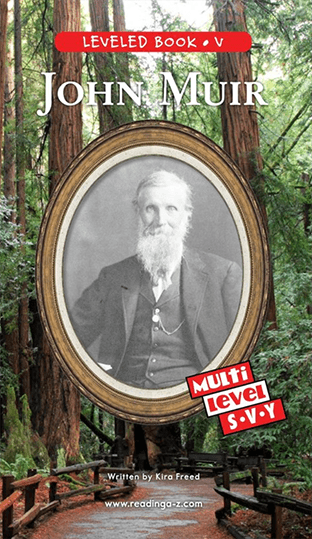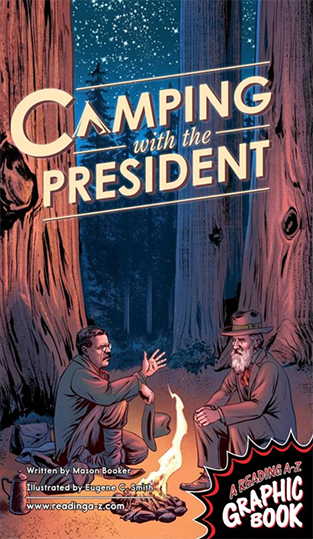Holding your students’ attention can be a constant challenge. From advanced to struggling readers, everyone in your classroom loses interest in reading sometimes. How can you easily find rich, high-interest texts that will engage your readers while encouraging close reading and critical thinking skills?
Raz-Plus and Reading A-Z Graphic Books offer vibrant, colorful, exciting stories packed with opportunities for practicing comprehension skills—and each one of them is paired with a matching leveled book.
The National Council of Teachers of English advocates using graphic books as a solid foundation for literacy and life-long learning. At Learning A-Z, our collection of 40 Graphic Books combines compelling illustrations with interesting stories while introducing readers to higher-level thinking skills.
“Each of our Graphic Books acts as an extension of one of our nonfiction Leveled Books. Graphic Books aren’t leveled, but we keep the grade level of the paired book in mind while creating these to ensure that the text is accessible to readers.”
Creating Our Graphic Books
"Each of our Graphic Books acts as an extension of one of our nonfiction Leveled Books. Graphic Books aren’t leveled, but we keep the grade level of the paired book in mind while creating these to ensure that the text is accessible to readers. The true challenge—and fun—of working on Graphic Books is figuring out how everything works together in the layout. It’s a like a puzzle: you have to understand how much space you have to play with on each page and in each panel in order to tell a complete story in just 12 pages, primarily through dialogue and illustrations. Working on a graphic book is a bit like writing a movie script, in that you need to visualize what the images will look like as you write the text.
"Graphic Books aren’t just about compelling visuals, though. These books are intended to get kids excited about reading, so they need something to read. Struggling and reluctant readers don’t want to be confronted by a big block of text or wordy captions explaining the story—they want to see pictures and people talking as the story unfolds in real time. We do include longer blurbs of text on the back cover and at the end of the book to provide a larger context for the story, with the idea that readers will be motivated to read this text because they want to know what happens next and learn more information. Then they can go read the paired leveled book to learn even more. I’m looking forward to seeing which books, including Graphic Books, get 'favorited' by Kids A-Z users."
- Sarah Ghusson, Topic Editor, Learning A-Z
Using Graphic Books in the Classroom
Each Raz-Plus and Reading A-Z Graphic Book comes with a lesson plan that provides tips for teaching that particular text. These tips include ways to connect activities with corresponding nonfiction Leveled Books. Printable and projectable versions of our Graphic Books can be used in whole-class or small-group instruction.
Students will also enjoy reading these books on their own or at home for independent practice. Raz-Plus Graphic Books are also accessible in the Reading Room on Kids A-Z, where students can use digital tools to highlight, take notes as they read, and favorite the selections they’ve read.
A Graphic Books Success Story
"My daughter, who’s now a bright high school freshman successfully reading at grade level, actually struggled with reading when she was in second grade. Then one day, I discovered her happily reading a graphic book. She fell in love with graphic books and soon began expanding her horizons, eventually becoming the strong reader she is today. One of my most powerful takeaways from that experience was how much I might have helped other struggling readers during my years as a teacher if I’d only tried using graphic books in my classes with the kids who didn’t enjoy reading!"
-Jennifer Nigh, Director of Professional Development, Learning A-Z
Some of the Benefits of Graphic Books
Because our Graphic Books are topically linked to other nonfiction texts in Raz-Plus and Reading A-Z, students reading these books can make cross-textual connections that build content knowledge and comprehension skills. The combination of written and visual information featured in our Graphic Books supports visual learners and encourages students at every level to practice the 21st century skill of decoding multimodal texts.
When students pay attention to the details of the visuals and dialogue, they create opportunities to make meaning and connect new information to prior knowledge. Most importantly, visual support combined with rich storytelling makes reading more enjoyable and builds confidence in developing or struggling readers.
Want to try the Graphic Books in Raz-Plus or Reading A-Z?
Choose one and start your free 2-week trial today!




